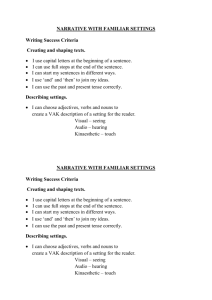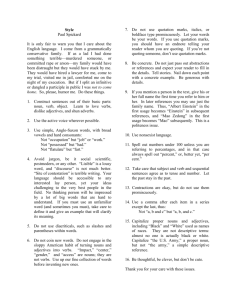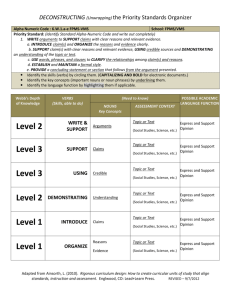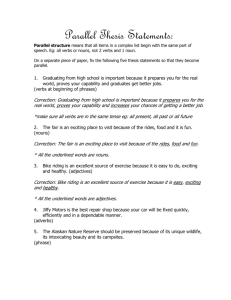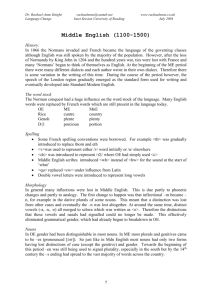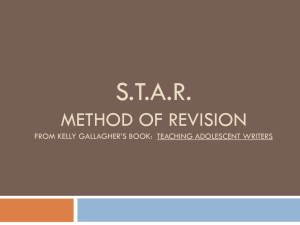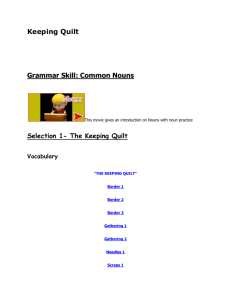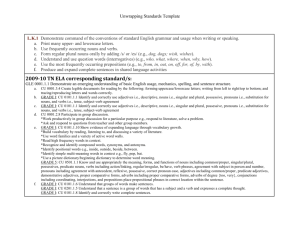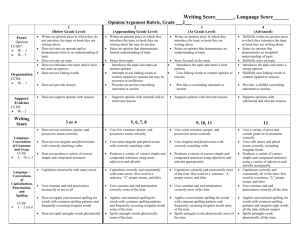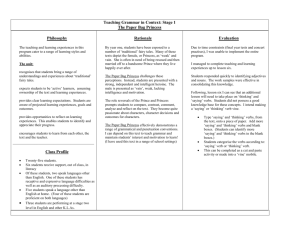Exploring the writing process helps to plan and draft a variety of
advertisement
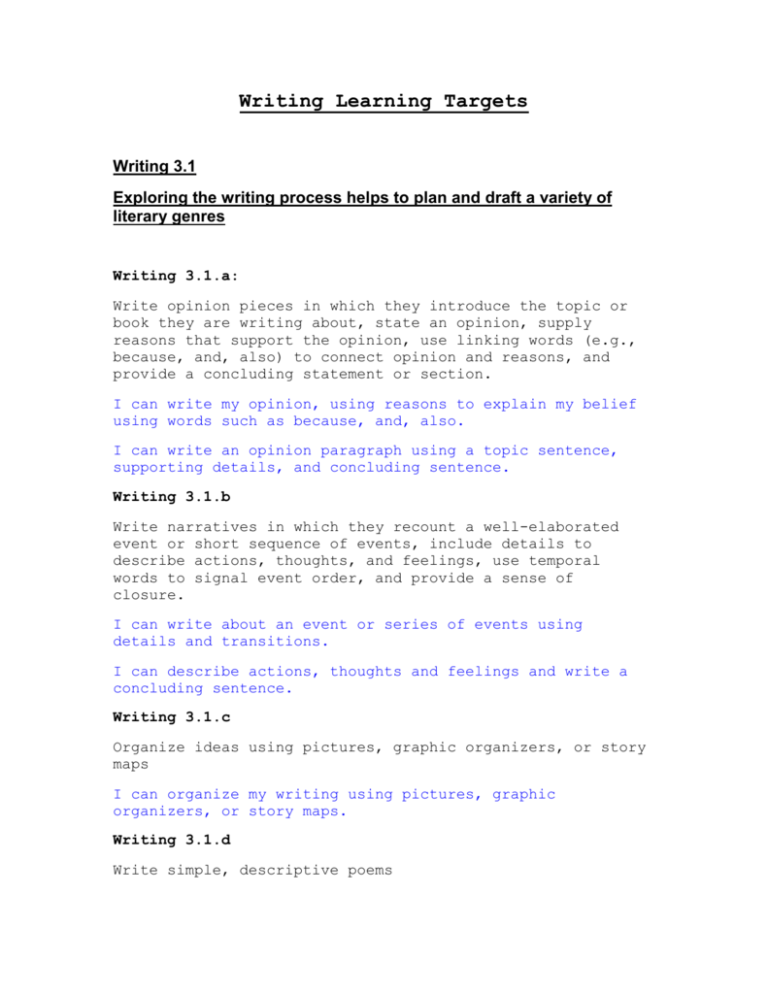
Writing Learning Targets Writing 3.1 Exploring the writing process helps to plan and draft a variety of literary genres Writing 3.1.a: Write opinion pieces in which they introduce the topic or book they are writing about, state an opinion, supply reasons that support the opinion, use linking words (e.g., because, and, also) to connect opinion and reasons, and provide a concluding statement or section. I can write my opinion, using reasons to explain my belief using words such as because, and, also. I can write an opinion paragraph using a topic sentence, supporting details, and concluding sentence. Writing 3.1.b Write narratives in which they recount a well-elaborated event or short sequence of events, include details to describe actions, thoughts, and feelings, use temporal words to signal event order, and provide a sense of closure. I can write about an event or series of events using details and transitions. I can describe actions, thoughts and feelings and write a concluding sentence. Writing 3.1.c Organize ideas using pictures, graphic organizers, or story maps I can organize my writing using pictures, graphic organizers, or story maps. Writing 3.1.d Write simple, descriptive poems I can write simple, descriptive poems. Writing 3.1.e Write with precise nouns, active verbs, and descriptive adjectives I can write with nouns, action verbs, and descriptive adjectives. Writing 3.1.f Use knowledge of structure and crafts of various forms of writing gained through reading and listening to mentor texts I can listen to stories and write like the author. Writing 3.1.g Develop characters both internally (thoughts and feelings) and externally (physical features, expressions, clothing) I can describe a character’s thoughts and feelings and how they look. Writing 3.2 Exploring the writing process helps to plan and draft a variety of simple informational texts Writing 3.2.a Write informative/explanatory texts in which they introduce a topic, use facts and definitions to develop points, and provide a concluding statement or section. I can introduce information using a topic sentence, supporting details and a conclusion. Writing 3.2.b Write letters and "how-to's" (procedures, directions, recipes) that follow a logical order and appropriate format I can write a friendly letter using the 5 parts of a letter correctly. I can write a “How- to” using a logical sequence. Writing 3.2.c Organize informational texts using main ideas and specific supporting details I can introduce information using a topic sentence, supporting details and a conclusion. Writing 3.2.d Organize ideas using a variety of pictures, graphic organizers or bulleted lists I can use a graphic organizer to help me write. Writing 3.2.e Use relevant details when responding in writing to questions about texts Writing 3.2.f State a focus when responding to a given question, and use details from text to support a given focus I can answer a question by using key words from the question to begin my answer. Then I can use details to support my answer. Writing 3.2.g Apply appropriate transition words to writing I can use transition words in my writing. Writing 3.3 Appropriate spelling, capitalization, grammar, and punctuation are used and applied when writing 3.3.a. Demonstrate command of the conventions of standard English grammar and usage when writing or speaking. 3.3.a.i Use collective nouns (e.g. group). I can use nouns that name groups. (herd, pod, gaggle) 3.3.a.ii Form and use frequently occurring irregular plural nouns (e.g., feet, children, teeth, mice, fish). I can use plural nouns like feet, children, teeth, or mice. 3.3.a.iii Use reflexive pronouns (e.g., myself, ourselves). I can use pronouns about myself. 3.3.a.iv Form and use the past tense of frequently occurring irregular verbs I can use past tense verbs like sat, told, or hid. 3.3.a.v Use adjectives and adverbs, and choose between them depending on what is to be modified. I can use both adjectives and adverbs correctly. 3.3.a.vi Apply accurate subject-verb agreement while writing I can write my nouns and verbs so that they sound right in the sentence. 3.3.a.vii Produce, expand, and rearrange complete simple and compound sentences I can add details to my sentence to make it interesting. 3.3.a.vii Vary sentence beginning I can start my sentences in a variety of ways. 3.3.a.viii Spell high-frequency words correctly I can spell high-frequency words correctly in my everyday writing. 3.3.b Demonstrate command of capitalization, punctuation and spelling when writing 3.3.b.i Capitalization I can capitalize proper nouns. 3.3.b.ii-iii Punctuation I can use commas correctly in the greeting and closing of a letter. I can use apostrophes to form contractions and commonly used possessives. 3.3biv-v Spelling I can use correct spelling patterns in my writing. I can use dictionaries and word lists to check and correct my spelling. 3.c. Edit and Revise I can edit and revise my writing with adult support. 3.d. Digital tools I can use digital tools to create my writing in a collaborative setting. Standard 4: Research and Reasoning 1. a. I can identify and use a variety of resource materials. b. I can identify a topic and gather information to support it. c. I can use table of contents, headings, diagrams and illustrations to find information. d. I can use a variety of multimedia sources to answer my questions. e. I can use what I know to help me answer a question or I can find my answers through a resource. 2. a. I can learn what it means to be fair-minded. b. I can work with others to research a topic. c. I can ask meaningful questions on topic.
